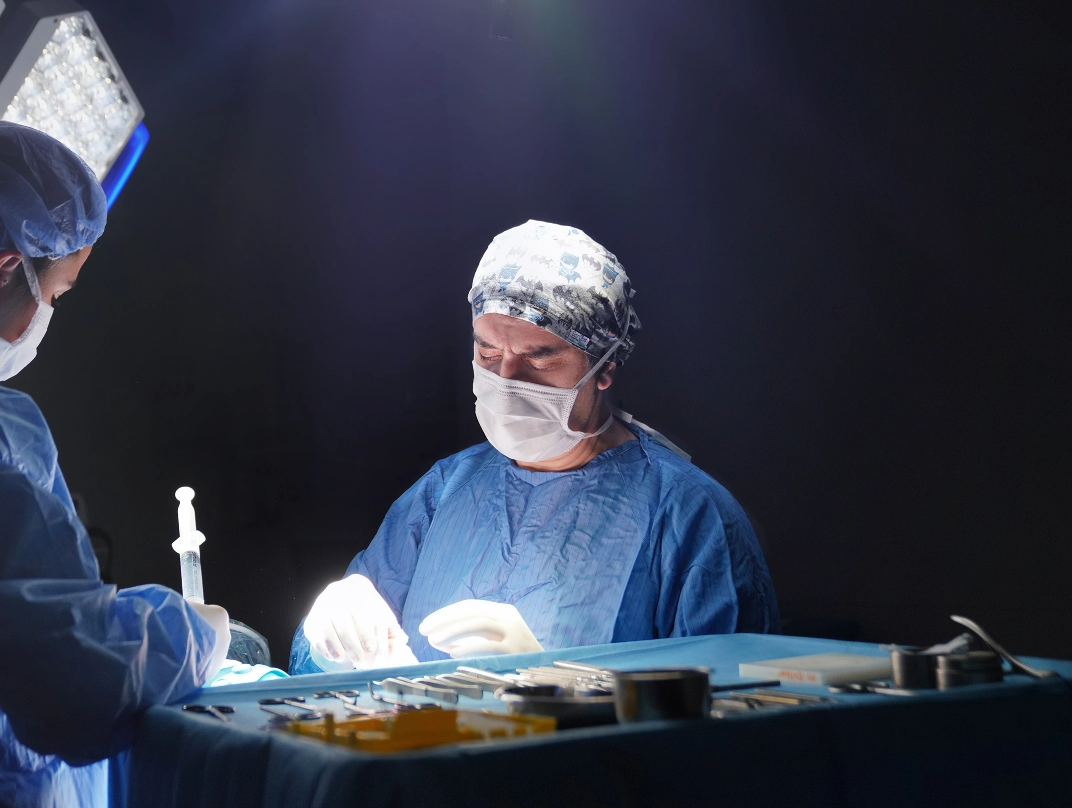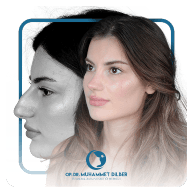
Otoplasty / Ear Aesthetics
The ear, our hearing organ; It consists of 3 parts: outer, middle and inner ear, and 80% of its development is completed by the age of 5-6. For this reason, ear aesthetic surgeries, unlike other plastic surgeries, can be performed from the age of 6, that is, before starting school. In this way, the child will never encounter psychological problems that he may experience due to the deformity of his ears during his school years. Additionally, ear aesthetic surgeries can be performed at any age after the age of 5.
Deformities that require ear aesthetic surgery are irregularities that occur in the part of the outer ear that we call the auricle. As a function, the auricle collects sounds from the external environment and transmits them to the eardrum. Structurally, it consists mainly of cartilage and skin tissues. Deformities in the auricle generally occur as a result of changes in the cartilage.

EAR SHAPES AND SOLUTIONS
The incidence of congenital ear anomalies (deformities) is generally 1 in 6000 live births. It is mostly seen in men and on the right side. More information below, including non-surgical options for anotia (absence of the auricle); Lop ear (narrow ear = the upper part of the auricle being narrow or short in the vertical direction); Microtia (occurrence of only a very small part of the earlobe or pinna.
What is Ear Aesthetics (Otoplasty)?
The surgery can be performed from the age of 6. It can be performed under general anesthesia in children, and under local anesthesia in those over 10 years of age. In local anesthesia, an anesthetic agent is injected around the ear (auricular block). In a short time, the ear becomes completely numb and the patient does not feel pain during the surgery. The surgery may take approximately 1.5 – 2 hours.
In prominent ear plastic surgery, the cartilage tissue of the pinna is opened through an incision made behind the ear. If the depth of the turbinate is large, as much cartilage as necessary is removed from the turbinate. To ensure that the auricle curves backwards, the cartilage is thinned with a cartilage file in appropriate places. This thinning softens the cartilage, allowing it to be shaped more easily. The area to be thinned is marked with special paint.
Special stitches are then placed to make the fold permanent. It is very important that the stitches used are suitable for this surgery. In particular, colorless stitches should be used. With these stitches, the curve of the ear canopy is increased, allowing it to come closer to the head. The angle of the auricle with the head is normally 30-35 degrees. The stitches are adjusted and knotted to create this angle.
Since the surgery is performed behind the ear, no external scars are visible. The patient is discharged and sent home on the same day.
Anotia, Microtia, lop ear:
The incidence of congenital ear anomalies (deformities) is generally 1 in 6000 live births. It is mostly seen in men and on the right side. This anomaly occurs in many different ways, such as anotia (absence of the auricle), microtia (formation of only the earlobe or a very small part of the auricle) and lop ear (narrow ear = the upper part of the auricle being narrow or short in the vertical direction). Although there is no definitive information about the cause of these, they may be caused by inadequate blood circulation in the baby while in the womb and some medications used by the mother during pregnancy.
These deformities may occur only as ear anomalies or may be accompanied by other anomalies in the body. Therefore, these babies need to be subjected to detailed examination. People with this anomaly may also have hearing problems.
Microtia Surgeries
Ear aesthetic surgeries to correct this anomaly generally begin at the age of 5, but if the anomaly is bilateral, the surgeries should begin at the age of 4. In the first surgery, the cartilage taken from the rib is shaped into the ear skeleton and buried under the skin in the temporal region. In the second surgery, the earlobe is rotated and brought to its normal position. In the third session, the skin on which the ear will be created and the previously embedded cartilage are removed and a skin patch is transferred behind it. After these basic surgeries, it may be necessary to perform some corrective surgeries. Patients and their families who decide to undergo surgery for microtia anomaly should know that these surgeries require patience and require a long time to complete all sessions.
Can Prominent Ear Surgery Be Performed on Children?
The ear, our hearing organ; It consists of 3 parts: outer, middle and inner ear, and 80% of its development is completed by the age of 5-6. For this reason, ear aesthetic surgeries, unlike other plastic surgeries, can be performed from the age of 6, that is, before starting school. In this way, the child will never encounter psychological problems that he may experience due to the deformity of his ears during his school years. Additionally, ear aesthetic surgeries can be performed at any age after the age of 5.
Deformities that require ear aesthetic surgery are irregularities that occur in the part of the outer ear that we call the auricle. As a function, the auricle collects sounds from the external environment and transmits them to the eardrum. Structurally, it consists mainly of cartilage and skin tissues. Deformities in the auricle generally occur as a result of changes in the cartilage.
Otoplasty is a very safe surgery with an extremely high success rate. Otoplasty in children is performed under general anesthesia. Local anesthesia with sedation is used in adults. Otoplasty is well received by patients. It warms our hearts to see the expression on a child's face when the bandages are removed 5 days after surgery and he no longer has ears.
Lop Ear and Microtia:
The incidence of congenital ear anomalies (deformities) is generally 1 in 6000 live births. It is mostly seen in men and on the right side. This anomaly occurs in many different ways, such as anotia (absence of the auricle), microtia (formation of only the earlobe or a very small part of the auricle) and lop ear (narrow ear = the upper part of the auricle being narrow or short in the vertical direction). Although there is no definitive information about the cause of these, they may be caused by inadequate blood circulation in the baby while in the womb and some medications used by the mother during pregnancy.
These deformities may occur only as ear anomalies or may be accompanied by other anomalies in the body. Therefore, these babies need to be subjected to detailed examination. People with this anomaly may also have hearing problems.
Microtia is the congenital absence of only a very small part of the earlobe or pinna. Ear aesthetic surgeries to correct this anomaly generally begin at the age of 5, but if the anomaly is bilateral, the surgeries should begin at the age of 4. In the first surgery, the cartilage taken from the rib is shaped into the ear skeleton and buried under the skin in the temporal region. In the second surgery, the earlobe is rotated and brought to its normal position. In the third session, the skin on which the ear will be created and the previously embedded cartilage are removed and a skin patch is transferred behind it. After these basic surgeries, it may be necessary to perform some corrective surgeries. Patients and their families who decide to undergo surgery for microtia anomaly should know that these surgeries require patience and require a long time to complete all sessions.
Split Earlobes
Can't wear your expensive diamond stud earrings because of an enlarged hole; deformity? Dr. A very common condition that Dilber often repairs is tears in the earlobe caused by pulling earrings. These earring holes may also extend as a result of an accident. The most common culprits that cause this condition are sweaters, hairbrushes, and dolls. Earlobes can be repaired in the office under local anesthesia. The procedure takes about 20 minutes per ear, and patients usually return to work immediately afterward. Ears can be pierced again in about 6 weeks. It's a quick and relatively painless solution to a rather unsightly and often overlooked condition.
No data available




